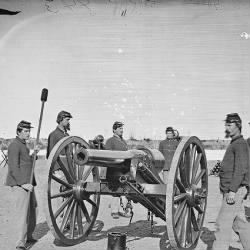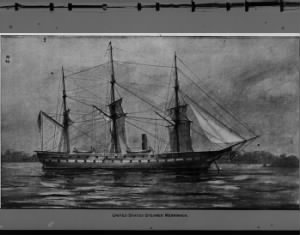

On April 16, 1862, the Confederacy—in need of troops to fight in its armies—passed the Conscription Act, the first effective general military draft in America.
When the Civil War began, the Confederacy had set its volunteers’ terms of enlistment for one year. However, as the year mark neared, it became obvious that the war would last for much longer and that the Confederate armies would need more soldiers. So in April 1862, the Confederacy passed the Conscription Act, which drafted healthy white men ages 18 to 35 for three-year terms (later acts would extend the ages first to 18 to 45, and later to 17 to 50). The Confederate Congress also extended the terms of those already serving under one-year enlistments for another two years (though the soldiers would effectively serve for the duration of the war).
The act allowed those drafted to find substitutes to serve in their place (though this would be discontinued in December 1863) and exempted men serving in occupations deemed critical to the war effort or civilian life. In the fall of 1862, exemptions were also extended to those who owned or oversaw 20 or more slaves.
The Federal government instituted its own draft a year later, in March 1863. The Enrollment Act called on men ages 20 to 45 to register for the draft. As in the South, substitutes were allowed, or else men could pay a $300 commutation fee (though commutation fees were eventually banned in 1864). Like the Confederacy, the Federal government allowed some exemptions for certain occupations, physical disability, and religious conscientious objectors.
Conscription was partially meant to encourage voluntary enlistment, as those who joined as volunteers were eligible to receive bounty money (enlistment bonuses) from states, counties, cities, and the federal government—in some cases totaling a sum upwards of $1,000. However, these bounties created the problem of bounty jumping, wherein men would volunteer, collect the money, then desert and re-enlist elsewhere and collect that money as well.
In the Union and Confederacy, conscription was generally a disproportional burden on the poor, since they were unable to pay for a substitute or a commutation fee. But while the draft was hated in both the North and the South, it was only in the North that it sparked riots, the most violent of which killed more than a hundred people—many of them black—in New York City in July 1863.
Do you know if any of your ancestors were conscripted during the Civil War? Tell us about them! Or start a search on Fold3 to find more information on this topic.












